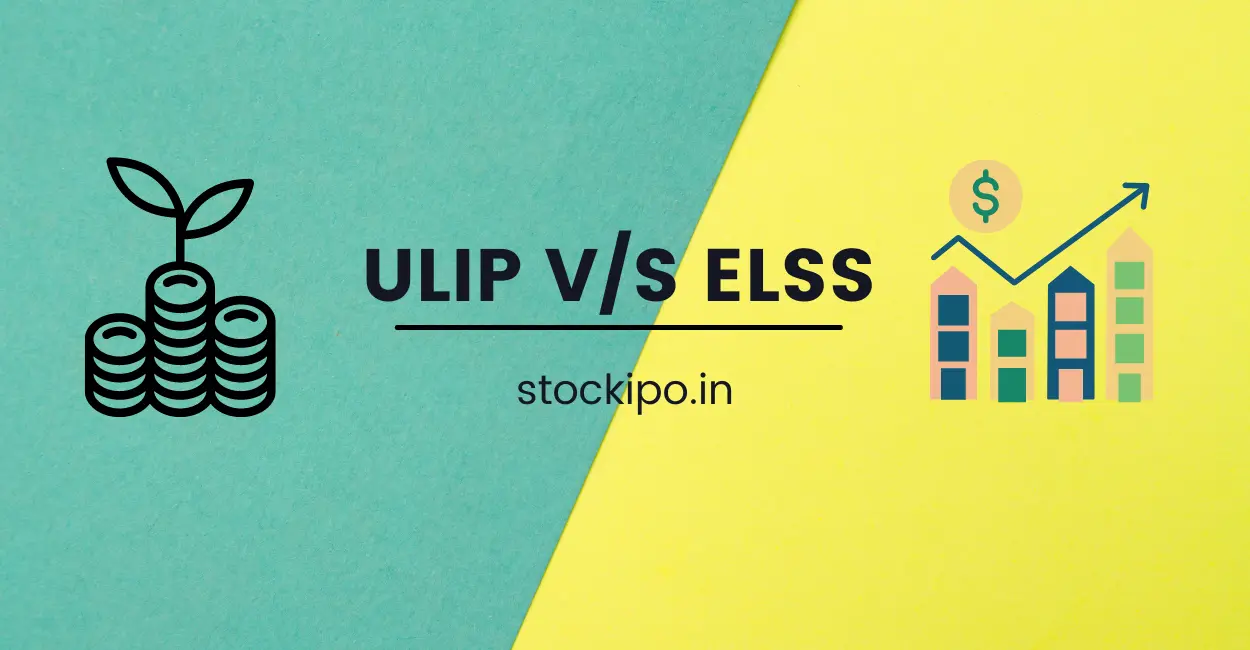The returns it generates and the benefits it offers over time are the main criteria used to determine the best investment plan for individuals. Before choosing one, it is important to compare the key characteristics of each investment instrument on the market. However, choosing between ELSS and ULIP plans is a frequent point of contention when looking for market-linked investment options. Even though both offer promising market returns, it can be difficult to choose which investment strategy will best meet a person’s long-term financial objective.
About ULIP
A Unit Linked Insurance Plan (ULIP) combines insurance with investment. The purpose of a ULIP is to provide wealth development together with life insurance, where the insurance company invests a portion of your investment in life insurance and the balance in a fund that is based on equity, debt, or both and meets your long-term goals. These objectives could include retirement preparation, children’s education, or any significant event for which you wish to save.
Features of ULIP
- Multiple Premium Payment Option: This is determined by the term of the policy you have chosen. The policy term and the number of premium-paying years (in the case of regular premiums) are usually the same. However, some policies allow the insured to select the number of premium-paying years.
- Allocation of Investments: One advantage of ULIPs is that you can select the type of funds you want to invest in based on your risk tolerance. You can be bold with equities funds, careful with debt funds, or enjoy the best of both worlds with balanced funds. Even after you’ve invested, you can direct your future premiums to the funds of your choice by using this ULIP option.
- Single Premium: A policy holder could also pay a premium amount in a lump sum at the time of buying the policy.
- Facility to Switch Funds: A ULIP is a very flexible investment channel with a five-year minimum lock-in duration. It is appropriate for both short-term financial benefits and long-term budgetary coverage. A ULIP provides the benefit and flexibility of fund switching between various options. This option of switching funds is quite advantageous and is also tax-free.
One can also protect its investments from market changes by reinvesting in debt funds during market downturns and switching back to equities during market upswings. All of this is available at any moment, without additional prices or charges, within the same plan.
Advantages of ULIP
- Flexible Investment Option: Unit-linked insurance products offer financial protection as well as investment rewards to policyholders. A policyholder can profit in the long run while also protecting their family.
- Accumulation of Savings: ULIPs enable you to develop a regular saving habit, which helps you create a corpus for future requirements.
- Multiple Benefits: The best feature of a unit linked insurance plan is that you can enjoy the dual benefit of having risk coverage through the insurance policy, as well as the option to invest your money to generate profits and eventually amass a sizable savings, for a single premium.
- Tax Benefits: The premiums paid for the coverage are tax-free under Section 80C of the Income Tax Act of 1961.
About ELSS
ELSS(Equity Linked Saving Scheme) is a type of mutual fund that primarily invests in stocks. In other words, ELSS funds invest a large amount of their assets in equities. The composition of ELSS funds is such that they are heavily invested in equity.
ELSS funds invest 80% of their assets in equity-oriented securities. Because they are equity-heavy, they have the potential to outperform inflation in the long run.
Features of ELSS
- Tax Benefits: As implied by the ELSS definition, investors save through decreased taxation. ELSS can contribute up to one lakh fifty thousand rupees (from total taxable income). Section 80C of the Indian Income Tax Act applies to this feature.
- Lowest Lock-in Period: The equity-linked savings scheme has the shortest lock-in time of any popular investment product in the Indian market. An equity-linked savings scheme has a three-year lock-in term. Other products, such as fixed deposits and pension plans, have substantially longer lock-in periods.
- Diversification: After careful deliberation, a minimum of 80% of your total investment is put in equities and equity-oriented shares, with the remaining 20% placed in debt and hybrid funds. This diversification helps to limit the risks of equity investing.
- Higher Returns: Because ELSS are market-linked diversified equity schemes, they have an advantage over fixed return investments that provide tax benefits. Fortunately, because they are market-linked, tax saver mutual funds can deliver potentially higher returns that can outperform the negative impact of inflation over time. This is the primary reason why many people have switched from traditional options to mutual funds and ELSS.
Difference Between ULIP and ELSS
| Particulars | ULIP | ELSS |
|---|---|---|
| Meaning | Unit linked Insurance Plan is the full version of ULIP. ULIPs are a hybrid of insurance and investing. A tiny percentage of the money invested is used to secure your life, while the remainder is invested in the market. | The equities Linked Savings plan (ELSS) is a type of mutual fund plan that invests primarily in equities and equity-related securities in order to achieve high returns. |
| Returns | Because an investor can invest in any combination of equity, debt, or hybrid funds, the returns can vary. | Because the scheme is market-linked, the returns vary, but an investor can expect a return of 12-14%. |
| Tax Benefit | The money invested is tax deductible under Section 80C, but the earnings are taxable. | Over Rs 1 lakh, LTCG under ELSS is taxed at 10%. |
| Liquidity | Low | High |
| Lock-in- Periods | The mandatory lock-in period for ULIPs is 5 years. | The mandatory lock-in period for ELSS is three years. |
| Charges | Fund management fees and exit load fees | Premium allocation fees, policy administration fees, mortality fees, and so on. |
| Regulator | The IRDA regulates ULIP plans. | SEBI regulates ELSS funds. |
Conclusion
ELSS is suitable for investors seeking a short-term investment with strong growth potential. Because predicted returns from equities markets are higher than those from other investment classes. However, long-term investors should keep in mind that equity investments provide the best opportunity for wealth building. You can ride the market wave with SIPs to receive the best of both worlds: small investment quantities, decreased volatility risk, and high returns.
The only advantage of ULIPs, on the other hand, is the simultaneous benefit of insurance coverage and market returns. You receive a one-of-a-kind product that protects your plan in the event of the policyholder’s untimely death, as well as the possibility to build wealth through market returns.







